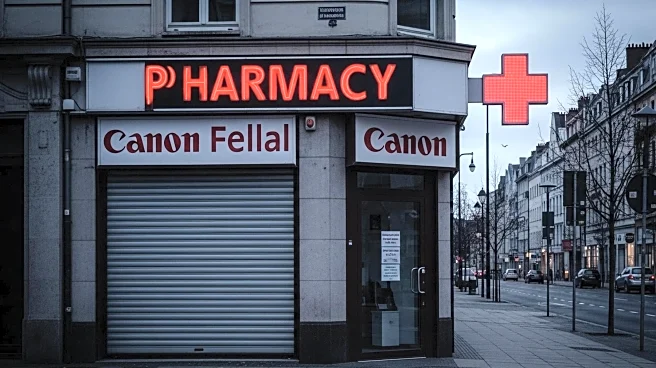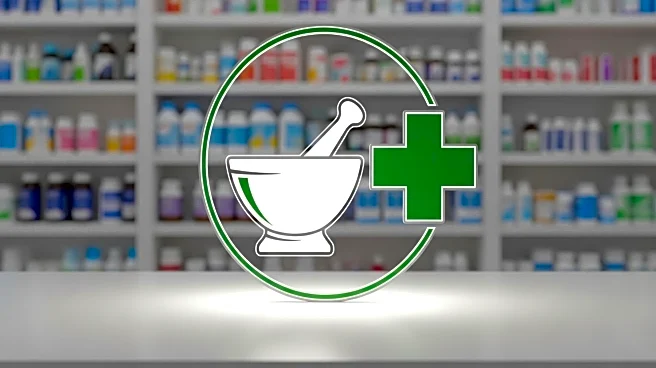What's Happening?
Rite Aid has announced the closure of all its stores nationwide, marking the end of its operations after more than six decades in business. The pharmacy chain, which once operated over 1,200 stores across 15 states, has faced significant financial challenges in recent years. The company filed for bankruptcy protection in May 2025, just eight months after emerging from a previous Chapter 11 filing in September 2024. Despite efforts to remain operational, including securing $1.94 billion in new financing, Rite Aid has been unable to overcome declining sales and mounting legal issues. The company has faced over 1,000 lawsuits alleging improper prescription practices, which were partially resolved through a settlement with the U.S. Department of Justice in June 2024. Rite Aid's closure follows a history of financial struggles and legal challenges, including allegations of filling unlawful prescriptions for controlled substances.
Why It's Important?
The closure of Rite Aid stores nationwide has significant implications for the pharmacy industry and consumers who relied on its services. As one of the largest standalone pharmacy chains in the U.S., Rite Aid's exit from the market reduces competition and may impact prescription drug prices and availability. The company's financial struggles highlight the challenges faced by traditional brick-and-mortar pharmacies in adapting to changing consumer preferences and regulatory pressures. The legal issues surrounding Rite Aid also underscore the ongoing scrutiny of pharmacy practices related to controlled substances, which could lead to stricter regulations and oversight in the industry. Consumers and communities that depended on Rite Aid for healthcare services may need to seek alternatives, potentially affecting local economies and access to medications.
What's Next?
With Rite Aid's closure, the company is working through its wind-down plan, which remains under court review amid objections from the U.S. Trustee. The bankruptcy proceedings will address the remaining opioid-related lawsuits, including claims from state and local governments and individual plaintiffs. As the company navigates the legal and financial complexities of its closure, stakeholders such as creditors, former employees, and affected communities will be closely monitoring the outcomes. The pharmacy industry may see shifts as competitors seek to fill the void left by Rite Aid, potentially leading to mergers, acquisitions, or expansions by other chains. Regulatory bodies may also consider further actions to address the issues highlighted by Rite Aid's legal challenges.
Beyond the Headlines
Rite Aid's closure raises broader questions about the sustainability of traditional pharmacy models in the face of digital transformation and evolving consumer behaviors. The company's struggles reflect the pressures on retail pharmacies to innovate and adapt to online competition and changing healthcare delivery methods. Additionally, the legal challenges faced by Rite Aid highlight the ethical and regulatory complexities surrounding prescription practices, particularly in relation to controlled substances. The case may prompt industry-wide discussions on improving compliance and accountability, as well as exploring new models for pharmacy operations that prioritize patient safety and regulatory adherence.










